‘Sandwich generation’: How Raleigh family built an ADU for aging parents in their yard
It’s Friday night. Sara and Lee Stein are leaving their Raleigh home to meet her mother and stepfather, Abby and Bob Millhauser, for an early dinner.
From their front door, they walk 42 steps to reach her parents’ brand-new, 940-square-foot accessory dwelling unit (ADU). It’s even less (14 steps) if they leave from the garage.
Technically, the Millhausers live in their daughter’s side yard. For most, it’d be a nonstarter. Even for those on good terms with their parents or in-laws.
Not the Steins.
Back in Los Angeles, where they’d resided for decades before moving to the Triangle in 2021, they lived “three to four times” closer to their neighbors.
“Our houses were so close together we could hear our neighbors flush their toilets,” quipped Lee Stein, 61, a senior sales executive.
By comparison, their 1.48-acre manicured lot in unincorporated Raleigh — about a 20-minute drive from the city’s downtown — is like living on a family compound in the countryside. He’s even got his own music room to which he can retreat.
“I’ve gone days sometimes without seeing [my in-laws],” he said, smiling.
This month, their 24-year-old son, Noah, graduates from college and moves back home. They’ve also got a daughter, Maggie, 19.
“There’s going to be three generations on this property,” said Sara Stein, 59, a brand consultant. “When the kids are back, they can go have lunch or drop by the grandparents. They never had that when we were in L.A.”
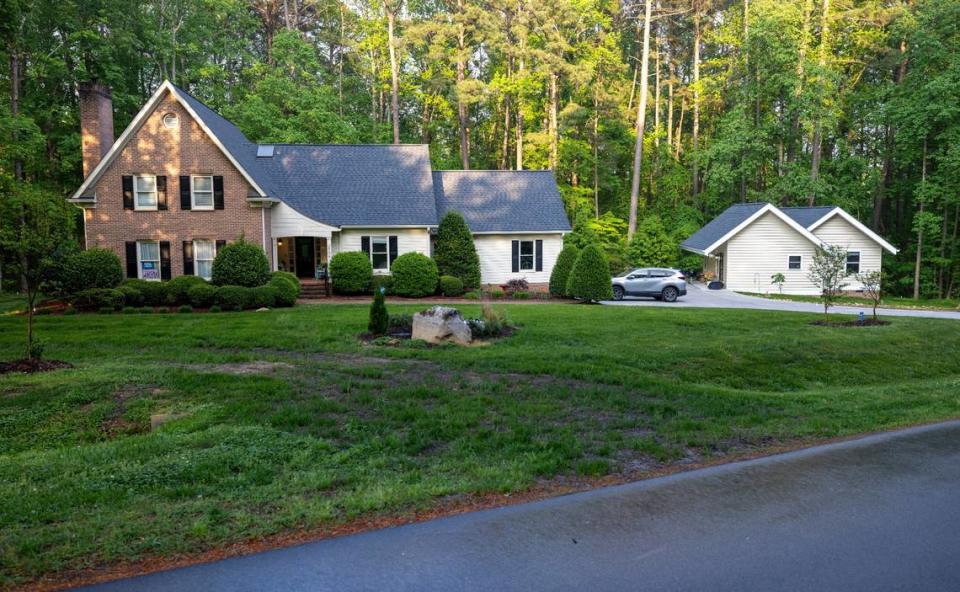
Multigenerational living ‘quadruples’
For years now, multigenerational living has been gaining traction.
From 1971 to 2021, the number of people living in multigenerational households quadrupled, reaching 59.7 million, according to a Pew Research Center survey. The share more than doubled as well, to 18% of the U.S. population.
Experiences vary greatly by age and income. But the surge has largely been fed by social forces, experts say, including the rapid growth of the U.S. Asian and Hispanic populations who, along with Black Americans, are more likely to live with extended family.
For many, it’s cultural. They grew up with multiple generations under one roof. Given soaring housing costs, both in the Triangle and nationally, it’s a way to share expenses. It’s also practical for caregivers of elderly parents. It can even be rewarding, some dare to say.
For people like the Steins (people ages 40 to 60, also known as the “sandwich generation”), it ticked all the boxes. They wanted to spend more time with their aging parents.
They also knew their adult children could benefit from a launching pad. Young adults, ages 25 to 29, the so-called “boomerang generation,” make up the highest share (31%) of people in multigenerational households. Compared with prior generations when they were young, this group generally stays in school longer, postpones or forgoes marriage, and delays forming their own households, the study found.
The trend is driving home sales in a sluggish market.
In 2023, multigenerational buying was back near an all-time high at 14% — up from 11% year-over-year — according to the National Association of Realtors’ (NAR) Profile of Homebuyers and Sellers.
It shows “no sign of peaking,” said Jessica Lautz, National Association of Realtors’ (NAR) deputy chief economist.
ADUs riding multigenerational surge
As this living arrangement gains steam, homeowners are increasingly turning to ADUs as the answer, especially in places like Raleigh where, in 2020, the city voted to allow ADUs by right; no rezoning or special district required.
Sometimes called granny flats, backyard bungalows, “casitas,” ADUs may be an apartment above the garage or in the basement. It can also be a one- or two-story standalone unit. Typically, it’s 450 to 800 square feet and has a kitchen, living area and separate entrance.
Raleigh has had a contentious history with ADUs. At some point in the 1980s, changes in local zoning laws made it illegal to build new ones.
But this rule change ushered in a new era where the city even provided incentives: a “first-of-its-kind” program where people could select from a menu of pre-designed cottage plans available for purchase directly from developers, ranging from $400 to $1,700. Since ADUs were made legal, the city has received 195 applications to build ADUs and issued 148 permits.
“We had no problems with the city. They encouraged us,” Sara Stein said.
Durham, Chapel Hill, Carrboro and Orange County also allow ADUs, but restrictions vary.
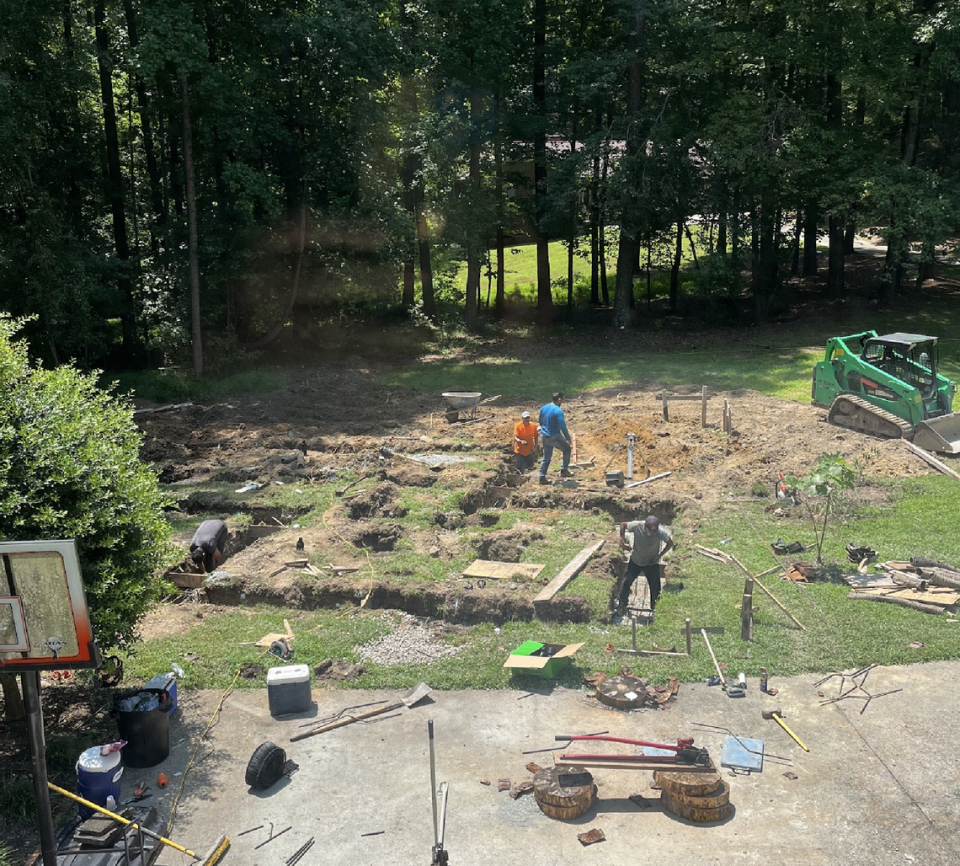
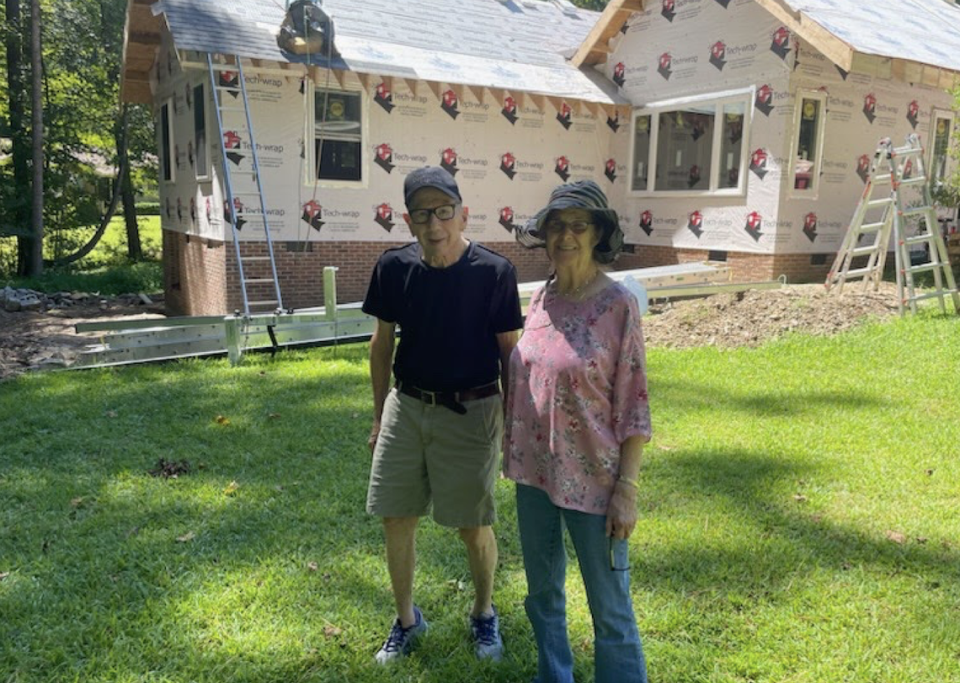
The Steins
In 2020, early into the pandemic, the family’s journey began.
Many reasons drove their decision to up sticks: traffic, droughts, fires and homeless encampments had become unbearable, they said. Sara Stein’s brother already lived in Raleigh, where he and his wife worked at N.C. State University. Their daughter is also an equestrian. She had more opportunities to build her career in the Triangle, they said. “It was a natural fit,” Sara Stein said.
After looking for two months, they found their dream house: a traditional 3,671-square-foot house, built in 1991 and recently remodeled, on Alloway Court in Raleigh’s Patrick Commons subdivision.
Inside, it had a first-floor master, garden tub and two bonus rooms. Outside, it featured black shutters, red-brick accents, and a large deck that backed up onto a watershed. They also had their own well and septic tank with a perk: no city taxes.
They bought it sight unseen, Sara Stein said. “We made an offer on New Year’s Eve following a ZOOM walk-through with our Realtor,” and closed a month later.
The Steins paid $610,000, about $166 per square foot and felt like they got a steal. The four-bedroom, four-bathroom also came with some street cred. It was featured on HGTV’s reality TV rehab show, “Love It or List It,” Season 11 Episode 10: Eat, Sleep, Laundry. It’s now a family favorite. (“We watched it probably four times now,” Sara Stein said.)
Eleven days later, in separate cars, they drove cross-country (with their dogs in the back) to begin their new life in the City of Oaks.
At the time, building an ADU wasn’t part of the plan, they said.
Her parents — Abby and Robert Millhauser, both in their mid-80s — lived in Baltimore, Maryland. Apart from when her stepfather had attended Duke University (graduating in 1959), they’d live there all their lives. Married for over 52 years, they raised their blended family there. Of their five children, one remained.
“We thought the likelihood of them leaving Baltimore didn’t exist,” Sara said. Until the Millhausers visited for Thanksgiving in 2021, and the possibility took hold. “It was like, ‘maybe we could do this,’” Sara Stein said.
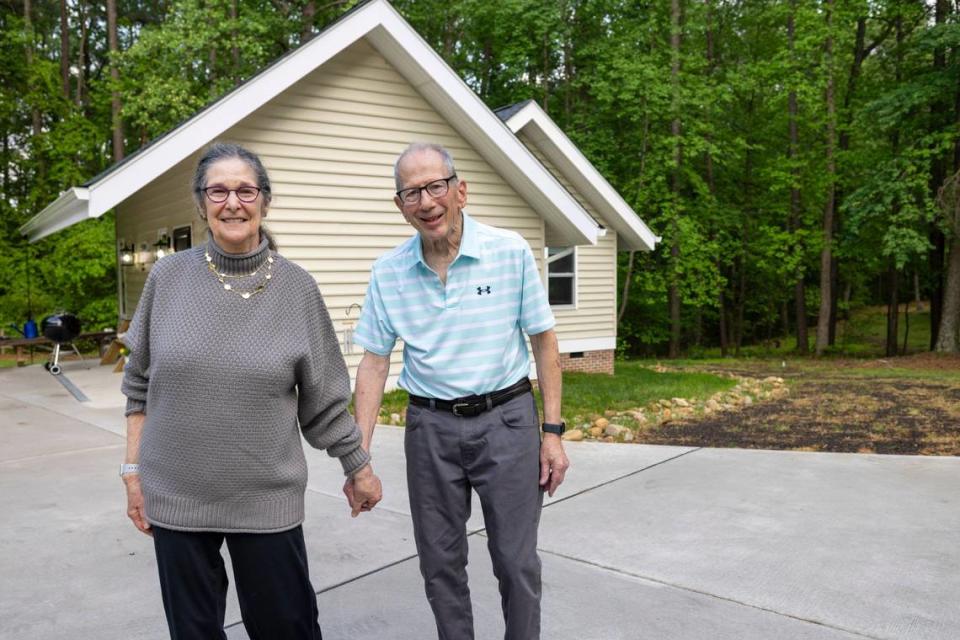
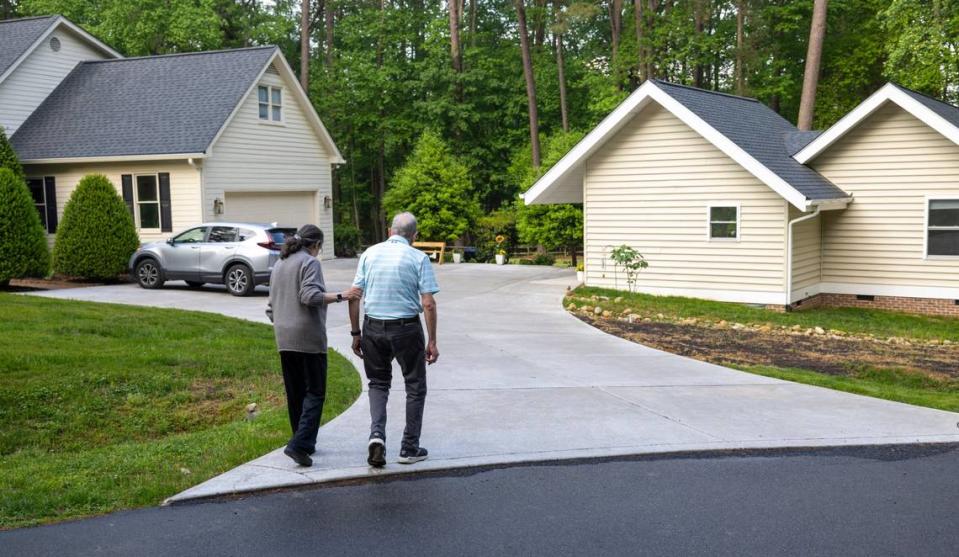
The Millhausers
The Millhausers had watched hours of HGTV shows. They were fans of tiny houses. They knew exactly what they wanted. At this stage, they preferred to live simply and, more importantly, independently. Accessibility was a priority.
They considered the city’s pre-approved plans, but quickly opted to work with their own architect. “We wanted to cut it to 1,000 square feet,” said Robert Millhauser, sitting in his compact but light-filled living room. “We’ve always wondered if we could do it. Especially me because I’m the sloppy one.”
To underscore the point, Abby Millhauser added: “I’m the organized one. I didn’t want to have to spend my time cleaning.”
In the early 1970s, the couple started their married lives in a four-story Victorian mansion. Over the years, they’d moved a handful of times, eventually downsizing to a 1,900-square-foot two-bedroom condo in Baltimore. In 2022, when they relocated to the Triangle during the building process, they squeezed themselves into a 700-square-foot rental in Cary, just to make sure “we wouldn’t kill each other.” (Spoiler: They didn’t.)
Finally, this January, they moved into their new one-story bungalow. The two-bedroom, two-bathroom features an open-floor plan with white kitchen cabinets and mid-century modern lighting. Large picture windows frame the living room where they’ve planted an inside garden of succulents and money plants.
All up, they paid $250,000 for the ADU. The Steins covered the cost to repave and extend the property’s driveway. Black-aluminum double mailboxes now reside at the top of the drive.
Unlike her husband, Sara Stein sees them every day. “It’s a treat for everybody to have this time,” she said.
The Millhausers, meanwhile, are settling into their new lives. Both have signed up for continuing education classes (native planting, 2024 election) at N.C. State; separately, Robert, who lives with Parkinson’s disease, takes boxing classes to build strength.
And every night, they watch and marvel as this year’s double brood of cicadas take over their shared backyard.
“We’ve still got a lot of landscaping to do,” Abby said and smiled, “but we’ll obviously wait until after the cicadas.”
Anna Millicent Roman, Mary Helen Moore and Tammy Grubb contributed to this report.

